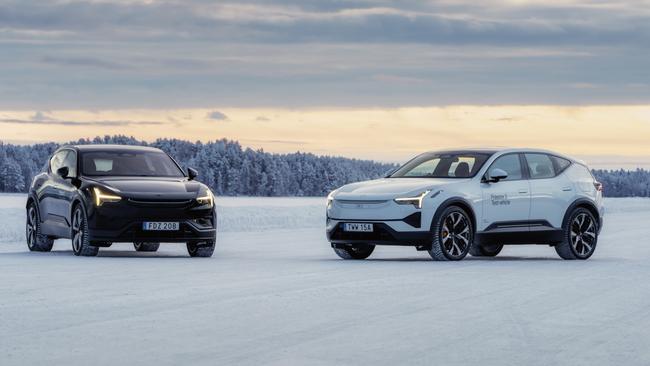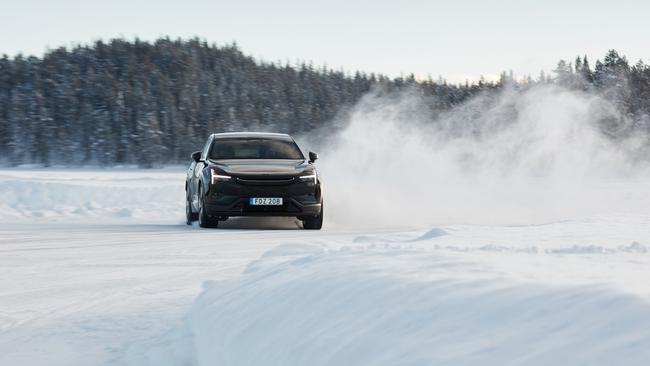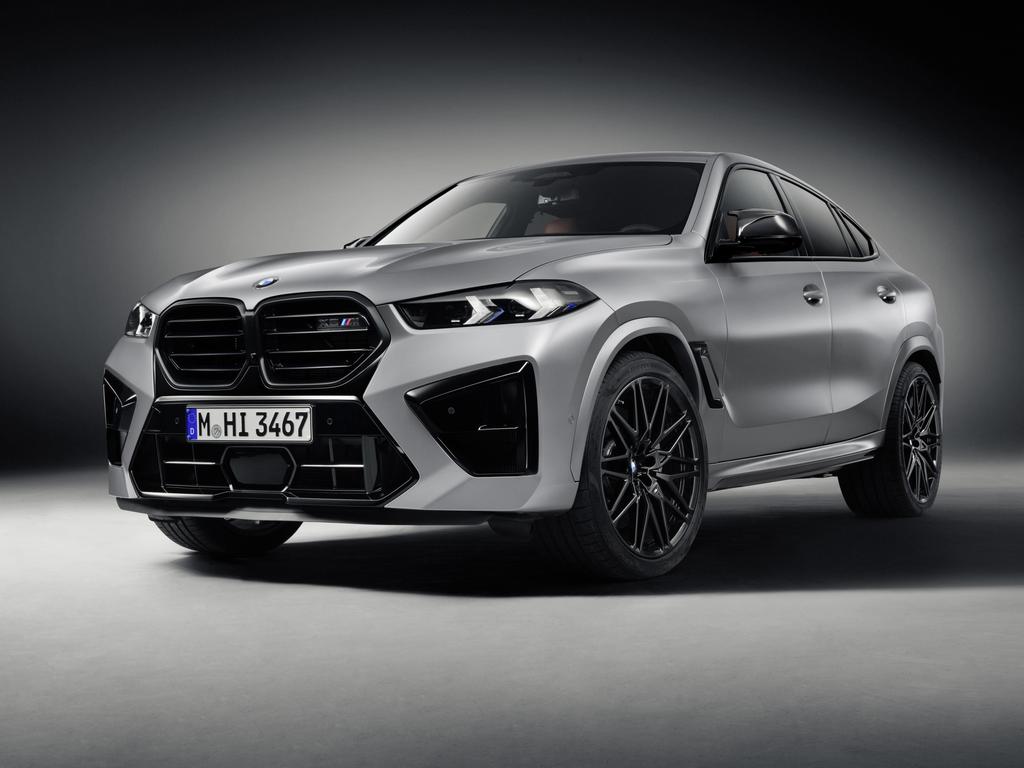Hooning on a frozen lake? Don’t try this at home, folks
When I was invited to drive a new Polestar EV on a frozen lake in Swedish Lapland, I glibly assumed it must be safe. | WATCH THE VIDEO

I find it useful to wrap moments of risk in the fumbling embrace of ignorant bliss, so when I was invited to drive a new Polestar EV on a frozen lake in Swedish Lapland (no, it’s not the home of Lap Dancing, because you’d be injured if you attempted such things in a place where the temperature drops below -50C), I glibly assumed it must be safe.
Slippery, sure. Inherently likely to end with the whump of metal careering into a snow bank, definitely. But safe – despite the protestations of my wife, who seemed to think two-plus tonnes of car on ice was inevitably going to result in a drowned husband and a lifetime spent cursing his combination of irresistible handsomeness, wit and stupidity.
Not wanting to engage with too many disturbing facts that might stop me from a first ever visit to the Arctic Circle, I assured her that the lake would be at least as deeply frozen as her heart, which she seemed to appreciate.
I’d genuinely assumed the ice would be many metres deep – so when I was told on arrival at the starkly beautiful, stratospherically chilled test track outside Jokkmokk (it sounds like an Ikea furniture setting, because it is) to be told that it was a mere 72cm deep, that I would see lots of cracks in said ice and that I should not panic when I heard creaking, snapping sounds that resembled gun shots, I was shaken. Or would have been, if I was not already shivering so hard.
Sadly, I was unable to express my fears because my tongue had frozen to the roof of my mouth, so I was bundled into the new Polestar 3, which is allegedly a competitor for such brute behemoths as the Porsche Cayenne and BMW iX, but looks closer in style and size to Audi’s curvy Q8 E Tron. It’s a clever, Scandy bit of design that pulls off one of the hardest tricks in carbiz: making an SUV look desirable.

Clearly, this is a big move into a hugely important segment of the market for the Swedish/Chinese EV brand, which previously felt like it was created only to satisfy the needs of people who liked the look of Tesla’s Model 3 but didn’t want to look like everyone else.
We’re driving it on a frozen lake with three different test tracks cut into it, not because it will be amusing for the Swedes to watch – they particularly enjoy pointing out the big truck they’ve brought to tow us out, should we stuff up – but because this is where they’ve actually developed the Polestar 3, through some of the harshest months of winter on the planet.
Joakim Rydholm, Polestar’s head of chassis development, looks like a bearded bird-watcher – but sit next to him when he’s driving a car on ice, as I did, and you quickly realise he’s a raving lunatic with a death wish. It is his strong belief that if you develop a car to survive in arctic conditions, and to be fun when sliding sideways, it will succeed anywhere.
He has given the Polestar 3 a low centre of gravity, a perfect weight balance and a seating position lower than in other SUVs. I genuinely think he might have misread the design brief and decided he was building a sports car and not a family hauler, because he is so obsessed with the joy of driving and making steering that makes people smile. I liked him a lot.
His favourite feature, however, is the 3’s Torque Vectoring Dual Clutch system, which is theoretically designed to make the car corner better anywhere, but just happens to turn it into a joyous drift machine on ice. (Cleverly, the TVDC can also disconnect the motor on the rear axle when you’re cruising, turning your AWD vehicle into a FWD one to improve efficiency and extend driving range.)

The typical electric fury with which the Performance version delivers its whopping 910Nm of torque, and 380kW, should be enough to dig a hole in 72cm of ice, or at least scare people, but somehow Joakim has fettled a vehicle that not only copes with it but delights in producing powdery power slides.
Sure, for the first 10 minutes, I was confused and terrified, but once I came to trust in the Polestar’s clever vectoring and even smarter traction systems, I spent the next several hours completely forgetting how perilous the setting was and having a frozen ball (I also found two of these later in the shower).
Polestar is clearly hoping to step out of the giant Tesla shadow and into a more premium, European world, because the new 3 will start with a price of $132,900 for the Long Range Dual Motor version (360kW/840Nm) with a claimed range of 610km. It then rises to $141,900 if you add the Performance Pack, which cuts your range to 560km. (Drive an EV like this in -20C, as we did, and you’ll be lucky to get 300km – batteries, much like sensible humans, do not love extreme cold.)
The Polestar 3 looks like a potent potential game-changer for the brand, particularly in an SUV-obsessed market like ours, and I have a feeling it just might be as much fun to drive on loose gravel as it is on frozen lakes.
-
Polestar 3 Long Range Dual Motor
ENGINE: Three-phase permanent magnet synchronous motor, front, and permanent synchronous motor, rear, 360kW/840Nm, 111kWh battery
TRANSMISSION: One-speed automatic, all-wheel drive
PRICE: $132,900
RATING: ★★★★
More Coverage
This car has everything — including a great left hook







To join the conversation, please log in. Don't have an account? Register
Join the conversation, you are commenting as Logout